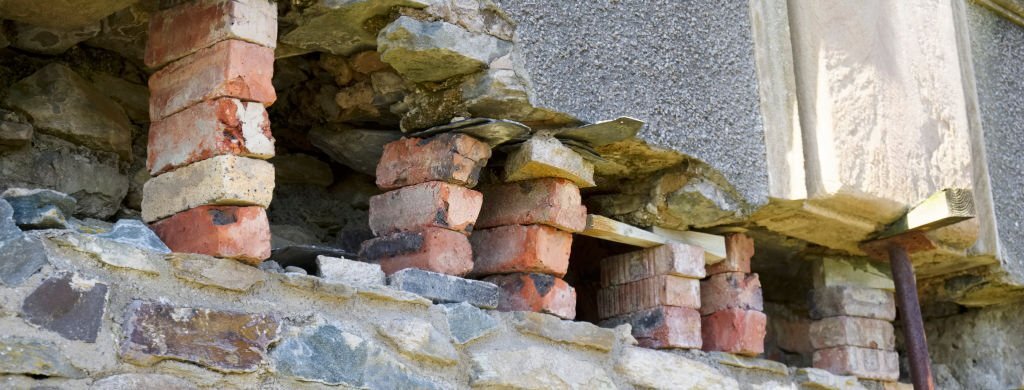How to Remove a Load Bearing Wall?
Here are the steps your contractor should follow, failure to perform the work in the advised order may cause a structural failure in the future:
Step 1: Evaluation Before a wall removal project is even considered, we need to consider what will be the possible results or consequences involved by doing so. The first thing to evaluate will be mechanical, electrical, and plumbing locations. All those will have to be removed and rerouted in order to make the wall removal possible. To gain access to any of the MEP (Mechanical, Electrical, Plumbing) the sheetrock will have to be removed. In addition, it is also strongly recommended to remove the ceiling sheetrock on each side of the wall.
Step 2: Demolition: Sheetrock is removed, and all the MEP are out of the way. If the existing wall is just a partition wall, it can be removed, but if it is a load bearing wall, a temporary support wall will have to be installed to support the load while we remove the existing support. One-story house load bearing wall will usually support the ceiling structure, the roofing structure, or both. On a two-story house, a load bearing wall can support the floor of the second floor and the roof over it. At times, you can find a wall over wall that is supporting the roof and doesn’t have any structural duty holding the second-floor structure. Please consult an expert before making determinations in regards to the structural duties of your structural elements. Many people wrongfully assume that the ceiling structure is parallel to the wall, then this wall is not a load bearing wall, and that is a big mistake!
Step 3: Temporary support: Temporary support needs to be designed and constructed based on the load above it. It can be very simple as a 2×4 structure like a regular wall, and it can be scaled up to a massive beam supported by hydraulic jacks to correct sagging floor surfaces or crooked rooflines. It is recommended to consult a structural engineer to learn what will be sufficient to get the job done.
Step 4: Remove the wall: After the installation of the proper support to the structure on the top has been completed, the wall can then finally be removed. At this stage, the structural engineer design of the permanent support needs to take place. The support is usually defined as a “beam” it can be a wood beam, a combination of wood and metal, or it can be a steel structure. Regardless of what the design is, this is not a one-person’s job. Those structural elements can be very heavy and very hard to handle and move around.
Step 5: What are the different types of support beams: Beams are horizontal structural elements designed to hold vertical gravitational loads. Some beam names or descriptions will be based on the actual shape and material that the beam is made out of, and some names will be based on the application in which the beam is intended to be used as an overhanging beam will be a beam the is extended beyond its support points. A continuous beam will be a beam that is extended over several supports. Some samples of the structural descriptions of beams will be: I beam, LVL beams, Trusses, Flitch beams, Box beams, SCL, Glulam, and more.
Step 6: Beam installation: Finally, the room doesn’t look cramped but now with the new open concept floor plan we need to make sure that we will not experience any structural failure. If the beam is going to be a drop-down beam the process is fairly simple. All that needs to be done is to set the vertical support in place and raise the beam to its new position exactly where the wall used to be. If the beam is supposed to be installed in the ceiling so it will be invisible then the beam pocket must be prepared. Then the beam cradles have to be set. The beam can be set on the cradle and then all the structural element around it needs to be tied to it with joist hangers.
Step 7: Finishing the job: Now it is time to patch the floor, cover everything with sheetrock, texture paint and call the project done! This type of project are carrying great liability. Especially with two-story houses. Please don’t attempt to do it without consulting an expert first.
We offer free in-house consultation to our community in the great Houston area. You can also email us with any questions preferably combined with pictures and/or blueprints so our team of experts will be able to provide you with the best advice to make sure you and your family stay safe. Every project carries its own challenges, let us know how we can help.
How do I get a permit from the city to remove a wall?
In order to get a permit to remove a wall, the first thing you need to do is to draw the existing floor plan with measurements of all the walls in the area where you want to remove the wall. In addition to that, you need to draw the proposed floor plan showing the space of the room after the wall is removed. You will be required to specify if it is a one-story house or two. In some cases, you may be required to provide the 2nd-floor plan as well. Your next challenge will be to determine if the wall that needs to be removed is a load bearing wall or not. If it is just an interior partition wall with no structural duty the process will be very easy, but there are a few more things you want to take into consideration because those factors can affect the simplicity of the wall removal project. Do you have plumbing or electrical running in the wall you are planning to remove? Is this wall is fire-rated? Some walls by design are located in specific locations to delay fire from spreading. Fire-rated walls will usually be found between two homes in the same building or between the garage and the house it is attached to.
The city of Houston will need to know if you are in the 100-year floodplain, floodway, or conveyance zone. You will have to provide the total cost of the project with a residential repair spec list. If you are in the 100-year floodplain and the total value of your project will exceed 50% of the value of the house, the project may be rejected and you will not be able to get a permit for your project.
Do I need a permit to remove a wall?
If it is a load bearing wall the answer is yes, and you may need a structural engineer’s involvement to advise what support should take place instead of the wall that will be removed. If the wall is not load bearing but it has plumbing or electrical lines running through it
How can I tell what type of wall it is?
The best safest way will be to contact a structural engineer or an architect, an experienced knowledgeable contractor should be able to determine the type of wall by looking at the framing plan, Looking at your attic space, or by identifying the locations and sizes of framing members that go on top of the wall or running next to it. The safest way to evaluate if there is no attic space over the wall is to cut a section of the ceiling next to the wall on both sides for evaluation. If it is a two-story house that will not be sufficient, in that scenario the challenge will be to determine if there is another wall over the existing wall.
Hazardous Material:
In older homes you may find walls that have material associated with asbestos and lead paint, Demo in that scenario must be done by a certified contractor that can remove the waste in monitored controlled way. IF you have doubts you can get asbestos and lead paint testing done.
Please keep in mind that in many cases creating an opening in the wall is the same as removing a wall. Changing the size of windows and doors falls into this category as well. The city of Houston does not license building contractors, and this type of structural modification is not a DIY project. Please do not put your house and your family through the potential risk of experiencing a structural failure.
Our experience with past incidents:
Unfortunately, we have witnessed so many times deficient designs, undersized beams, sagging floors, and roofs that completely collapsed because they had no proper support. There are no shortcuts for structural design or for the construction part of it. Get the floor plan drawn, Let a licensed engineer advise of the framing members sizing, what temporary support needs to be installed, what size beams need to be used, How to tie it all together, and what joist hangers need to be used, etc. We offer free advice to everyone. Please do not hesitate to give us a call if you are in doubt or if you are in need of this type of work. We provide a lifetime warranty for all of our structural work, If it is done right it will stay like that!


